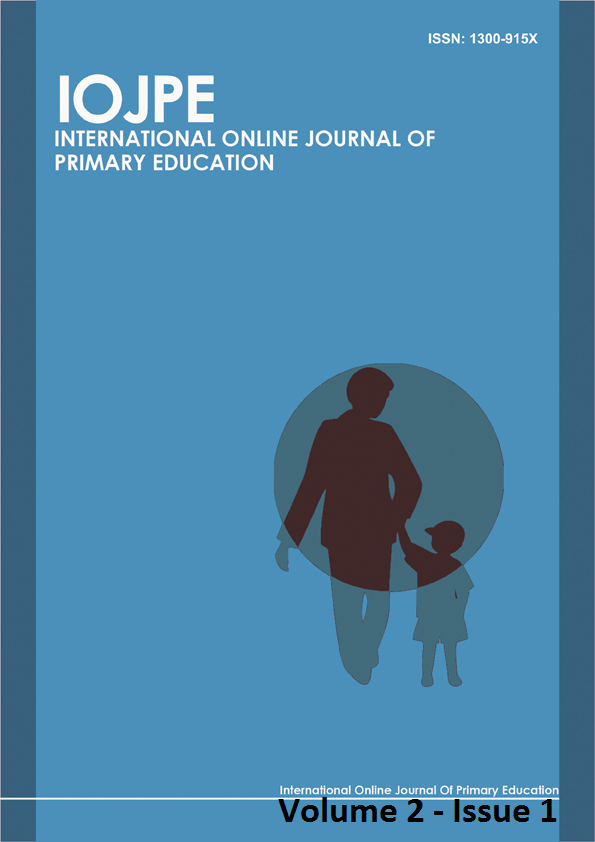THE RELATIONSHIP BETWEEN THE STATE-TRAIT ANXIETY LEVELS AND THE ACADEMIC ACHIEVEMENT OF MUSIC TEACHER CANDIDATES
Abstract
This study aims to test the relationship between state-trait anxiety levels and academic achievement among music teacher candidates. The sample for the study consisted of 80 music teacher candidates who were undergraduate students in the Faculty of Education in Gaziosmanpaşa University during the 2010-2011 academic year. For the purpose of the study, music teacher candidates' anxiety levels were assessed by the State-Trait Anxiety Inventory. Academic achievement scores were acquired from students’ official transcripts and a personal information form was used to gather demographic information. Result of the study revealed a significant relationship between music teacher candidates' levels of trait anxiety and their academic achievement. However, no statistically significant relationship was found between state anxiety levels and academic achievement scores. In addition, there were statistically significant differences in academic grade point averages on the basis of class variable. Juniors’ and seniors’ academic achievement scores were higher than freshmen and sophomores. According to the class variable, there was not any statistically significant difference with regard to state-trait anxiety levels. According to gender, male and female students’ state-trait anxiety levels and academic achievement scores did not differ.
Keywords: State-trait anxiety; music education; music teacher candidate; academic achievement.
REFERENCES
Alver, B. (2003). Güzel sanatlar eğitimi alan öğrencilerin psikolojik belirtilerinin çeşitli değişkenler açısından incelenmesi [The psychological symptoms and some special features of the students of the department of fine Art Education]. Kazım Karabekir Eğitim Fakültesi Dergisi, 8, 2-21.
Andrews, B., & Wilding, M. (2004). The relation of depression and anxiety to life-stress and achievement in students. British Journal of Psychology, 95, 509–521.
Aydemir, Ö., & Köroğlu, E. (2000). Psikiyatride kullanılan klinik ölçekler [Clinical scales used in psychiatry]. Ankara: Hekimler Yayın Birliği.
Aydın, K. B. (2009). Automatic thoughts as predictors of Turkish university students’ state anxiety. Social Behavior and Personality, 37 (8), 1065-1072.
Aydın, S., & Zengin, B. (2008). Yabancı dil öğreniminde kaygı: Bir literatür özeti [Anxiety in foreign language learning: A literature summary]. Journal of Language and Linguistic Studies, 4 (1), 82-94. Retrieved from http://jlls.org/Issues/Volume%204/No.1/saydin_bzengin.pdf
Balcı, A. (2005). Sosyal bilimlerde araştırma [Research in social sciences] (5th ed.). Ankara: PegemA Yayıncılık.
Develi, E. (2006). Konya’da ilköğretim okullarında görev yapan beden eğitimi öğretmenlerinin sürekli kaygı durumlarının incelenmesi [The investigation of the permanent worry state of physical education teachers who work at elementary schools in Konya]. Unpublished master’s thesis, Selçuk Üniversitesi, Sağlık Bilimleri Enstitüsü, Konya.
Engür, M. (2002). Elit sporcularda başarı motivasyonun durumluk kaygı düzeyleri üzerine etkisi [The effect of achievement motivation on state anxiety levels of elite athletes]. Unpublished master’s thesis, Ege Üniversitesi Sağlık Bilimleri Enstitüsü, İzmir.
Horwitz, E. K. (2001). Language anxiety and achievement. Annual Review of Applied Linguistics, 21, 112-126.
İkiz, S. F. E. (2000). Farklı liselerdeki ergenlerin benlik saygısı, akademik başarı ve sürekli kaygı düzeyi arasındaki ilişki [The Relationship between the self-esteem, the level of trait anxiety, academic achievement of the adolescents in different high schools]. Unpublished master’s thesis, Dokuz Eylül Üniversitesi Eğitim Bilimleri Enstitüsü, İzmir.
Kurtuldu, M. K. (2009). Müzik öğretmenliği bölümü piyano öğrencilerinin sınav kaygısına yönelik tutumları [Attitudes of piano students of department of music teaching towards examination anxiety]. Fırat Üniversitesi Sosyal Bilimler Dergisi, 19 (2), 107-126.
Küçük, D. P. (2010). Müzik öğretmeni adaylarının sınav kaygısı, benlik saygısı ve çalgı başarıları arasındaki ilişkinin incelenmesi [Assessment of relation between test anxiety, self-esteem and success in instrument for candidates of music teacher]. Ahi Evran Üniversitesi Eğitim Fakültesi Dergisi, 11 (3), 37-50.
Shek, D. T. (1988). Mental health of secondary school students in Hong Kong: An epidemiological study using the general health questionnaire. International Journal of Adolescent Medicine and Health, 3 (3), 191-215.
Şahin, N. H., Batıgün, A. D., & Uğurtaş S. (2002). Kısa semptom envanteri (KSE): Ergenler için kullanımının geçerlik, güvenilirlik ve faktör yapısı [The validity, reliability and factor structure of the brief symptom inventory (BSI)]. Türk Psikiyatri Dergisi, 13 (2). 125-135.
Şimşek, E. (2010). Akademik başarıyı yordamada psikosomatik belirtilerin rolü [The role of psychosomatic symptoms in the prediction of academic success.]. International Conference on New Trends in Education and Their Implications, 11-13 November, Antalya, Turkey. Retrieved July 16, 2012, from http://www.iconte.org/FileUpload/ks59689/File/156.pdf
Ma, X. (1999). A meta-analysis of the relationship between anxiety toward mathematics and achievement in mathematics. Journal for Research in Mathematics Education, 30 (5), 520-540.
Meece, J. L., Wigfield, A., & Eccles, J. S. (1990). Predictors of math anxiety and its influence on young adolescents' course enrollment intentions and performance in mathematics. Journal of Educational Psychology, 82 (1), 60-70.
Yılmaz, M., & Ocakçı, A. F. (2010). Bir kız öğrenci yurdunda kalan üniversite öğrencilerinin anksiyete düzeylerinin belirlenmesi [Determination the anxiety level of university students one dormitory located]. Maltepe Üniversitesi Hemşirelik Bilim ve Sanatı Dergisi, 3 (1), 16-23.
Yokuş, H., & Yokuş, T. (2010). Müzik ve çalgı öğrenimi için strateji rehberi I [Strategy guide for learning music and musical instruments - I]. Ankara: Pegem Akademi.
Downloads
Published
Issue
Section
License
Copyright (c) 2021 International Online Journal of Primary Education (IOJPE) ISSN: 1300-915X

This work is licensed under a Creative Commons Attribution-NonCommercial 4.0 International License.





